Salzburg charmed its way into our hearts when we visited the small Austrian town north of the Alps. Here are 7 tips on what to do in Salzburg and the reason why it has won a place on our list of favourite cities in Europe.
Written by Mette / Photo by Martin
Translated from Danish
Some cities you love before you have ever visited them. Other cities require a little extra research or several visits before you crack the code and find exactly what makes the place a memorable experience.
Neither of these applied when we traveled to Austria a week ago to visit Salzburg for the first time. We knew virtually nothing about the city when we arrived – but quickly fell in love with the Austrian charmer. Here are 7 reasons why we fell in love with the historic city.
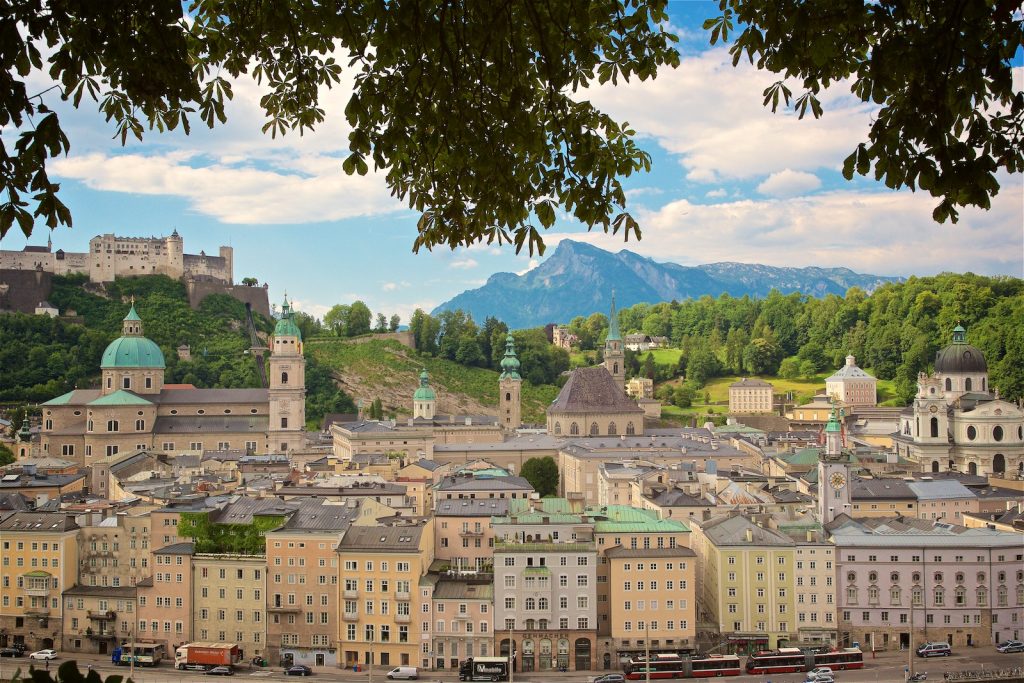
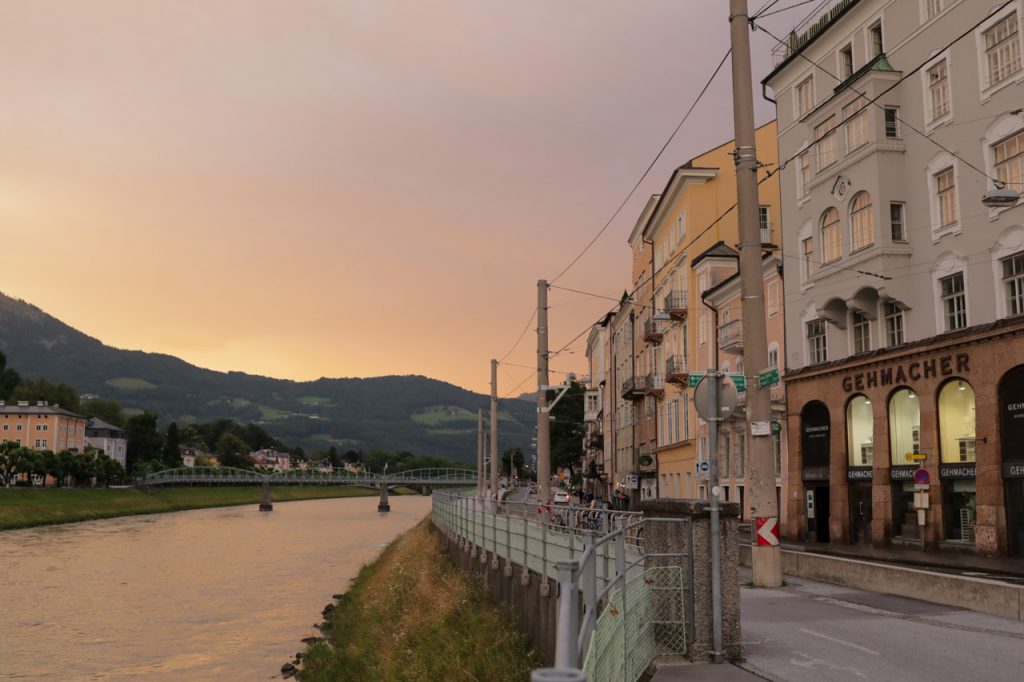
#1 – The nabel of Europe
Salzburg is what we in Danish would call “a piece of butter” (en smørklat). Located in the heart of Europe, the small, well-preserved town has been an important centre for hundreds of years and has benefited from the vibrant life that has flowed through the streets. A life with lots of cultural influence, money, food, and music. Even though the old town, Altstadt, is not particularly large, it has an impressive history. You can walk around it in a few hours, but find experiences for several days. And this was exactly one of the reasons why we loved visiting the city.
We could have spent several days in Salzburg, which is also a great starting point for road trips to surrounding cities. It takes approx. 2 hours to drive to Innsbruck, Vienna, or Munich. If you are more into nature experiences, you can climb to the top of the neighboring mountain Untersberg in 1 hour, drive to the Alps, or visit the Eagle’s Nest, which was Hitler’s summer residence, located on top of a 1.834-meter-high mountain.
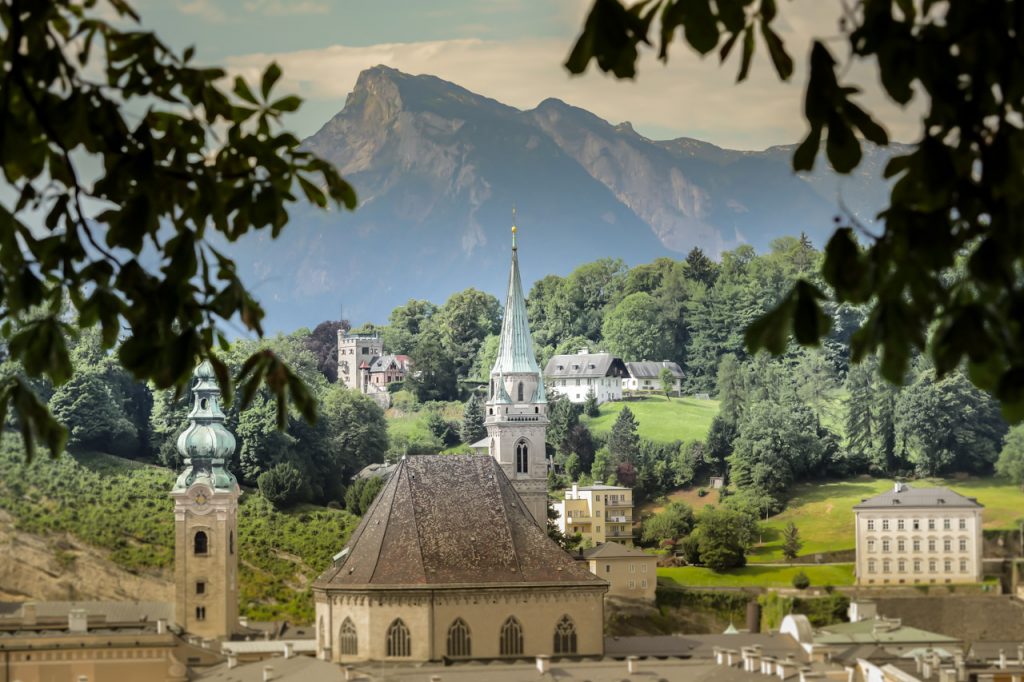
#2 – Beautiful as a postcard
Salzburg is a fairy-tale baroque city with an alpine idyll. On one side of the old town, the river Salzach meanders through a green landscape. On the other side, vertical cliffs rise dramatically and create an eye-catching backdrop for the many baroque buildings.
Everywhere, dazzling domes and golden spires point to the sky and lead the eye to the city’s landmark, Festung Hohensalzburg. A 900-year-old fortress that sits majestically on top of the cliffs and boasts of being Europe’s largest and best-preserved castle. And as darkness falls and the streetlights are turned on, it doesn’t take many shots of aquavit before you think it looks like a Disney fairy tale.
TIP: The best spot for a great city view
The Hohensalzburg fortress is a ‘must’ when you visit Salzburg. Even if you are not interested in history, the view over the city alone is worth the trip. You can either walk the steep way up in 15-20 minutes or take the cable car that takes you to the top in minutes.
Another good view is from one of the city’s bridges (our favorites were Makartsteg and Müllnersteg) or from Kapuziner Mountain if you take the arduous walk up the stairs which start at Steinergasse 7. Up here – next to the old Kapuziner Monastery, which by the way is still in use – you get a wonderful view over the river and the old town.
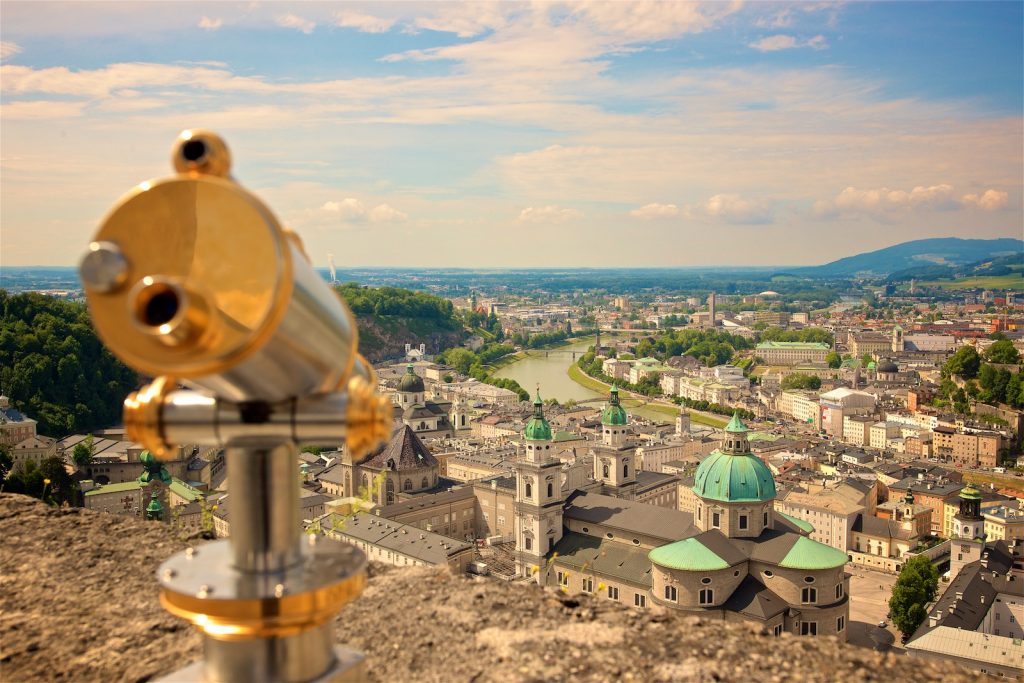
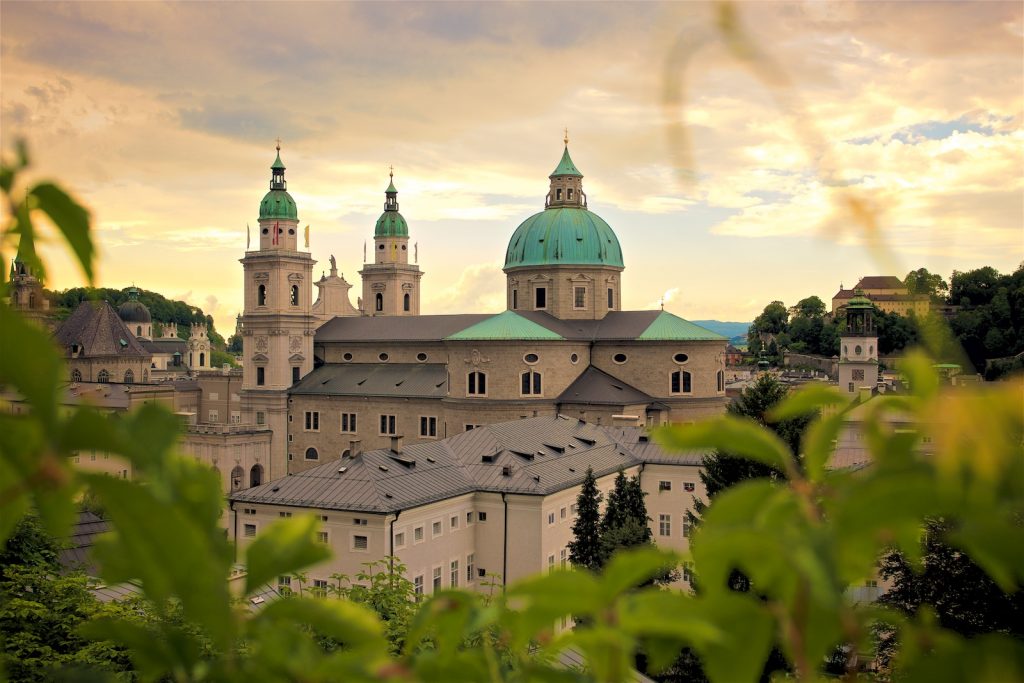
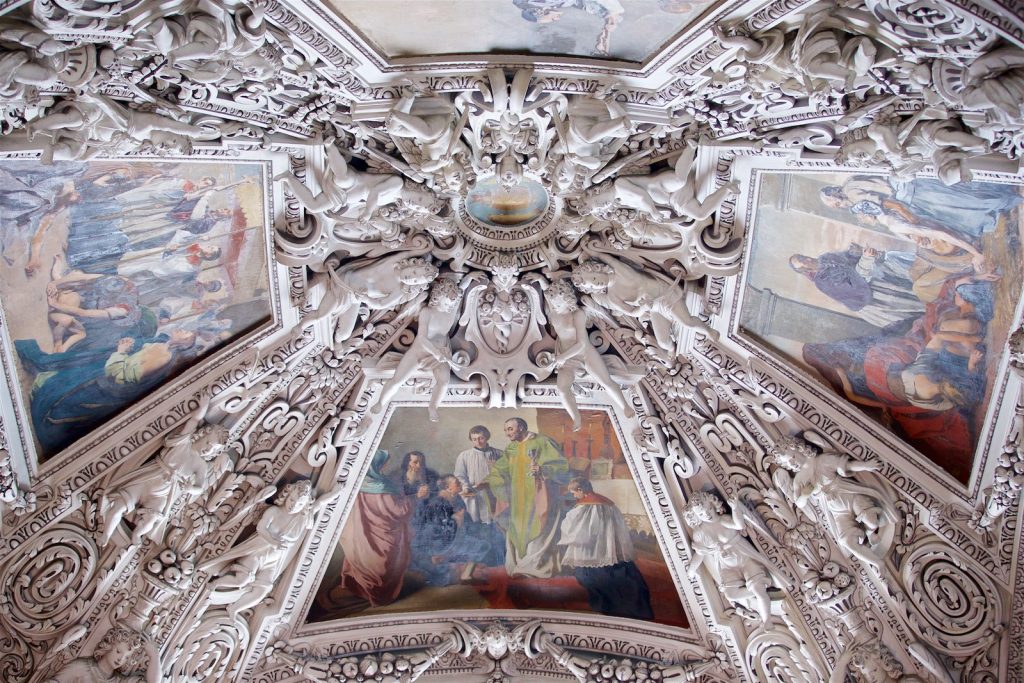
#3 – An architectural jewel
Strolling around Salzburg, it’s clear to see why the city is called the Rome of the North and became a UNESCO World Heritage Site in 1997. Before Salzburg became part of Austria 200 years ago, it was an independent church-state, similar to the Vatican. At that time, the ruling prince-archbishops were extremely fascinated by the extravagant architectural style of Rome and hired famous architects to build luxurious mansions, stunning churches, and magnificent squares with large fountains.
Today, the old town still stands as it did several hundred years ago. Here, no historic buildings have been demolished in favour of modern concrete blocks or steel high-rises. And it is so impressive to experience how the city consists of the same old streets, restaurants, shops, and buildings – just like when Mozart lived here in the 18th century. It feels like walking around a historical movie set.
TIP: Look up!
Remember to look up when you walk around Salzburg’s charming streets. Traditional, beautiful enamel signs and dangles hang above the shop entrances. Even the mega-brand McDonald’s has had to change their recognizable yellow M in plastic to an artistic sign in twisted iron (ironically it’s also the city’s most beautiful).
If you look up under the city’s roofs, you can find old proverbs painted with intricate writing or year numbers, which reveal which buildings are over 700 years old. And on some of the facades, you can still find beautifully painted sundials. But stick to your wristwatch if you want to arrive somewhere on time.
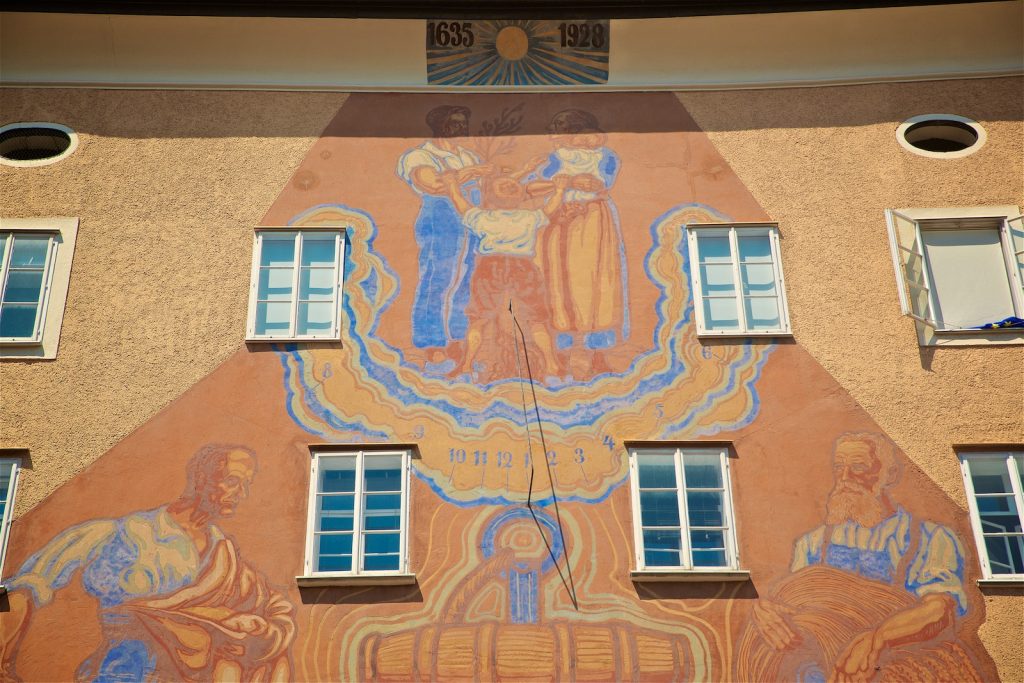
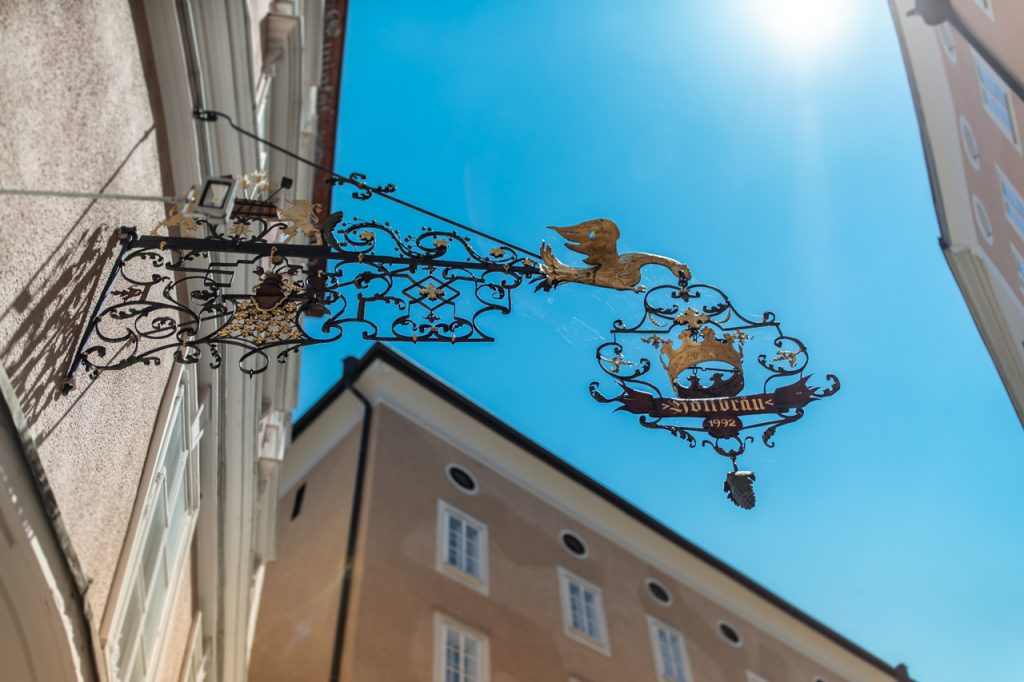
#4 – Impressed by the kitchen
Are you also among those who have only tried driving through Austria on the way to Italy and associate the country with tortured highway food? In Salzburg, there are completely “different buns in the soup” (another weird Danish saying). So, even if tourists primarily visit the city for the music, history, and architecture – the range of dining experiences is actually a good reason to set the GPS to Salzburg.
To our surprise, we found a great love for the kitchen. It is driven by a focus on local ingredients, honest cooking, and proud traditions. Especially the restaurants with a long history and authentic settings had an umami effect on the modern grandmother’s food.
Moreover, we discovered that Austria produces superb wines! If you can find them on the menu, you should try the Sauvignon Blanc from Stefan Potzing or Veyder-Malberg’s Grüner Veltlinder with the romantic name “Liebe dich”. Perfect wine for a date in summer-beautiful Salzburg
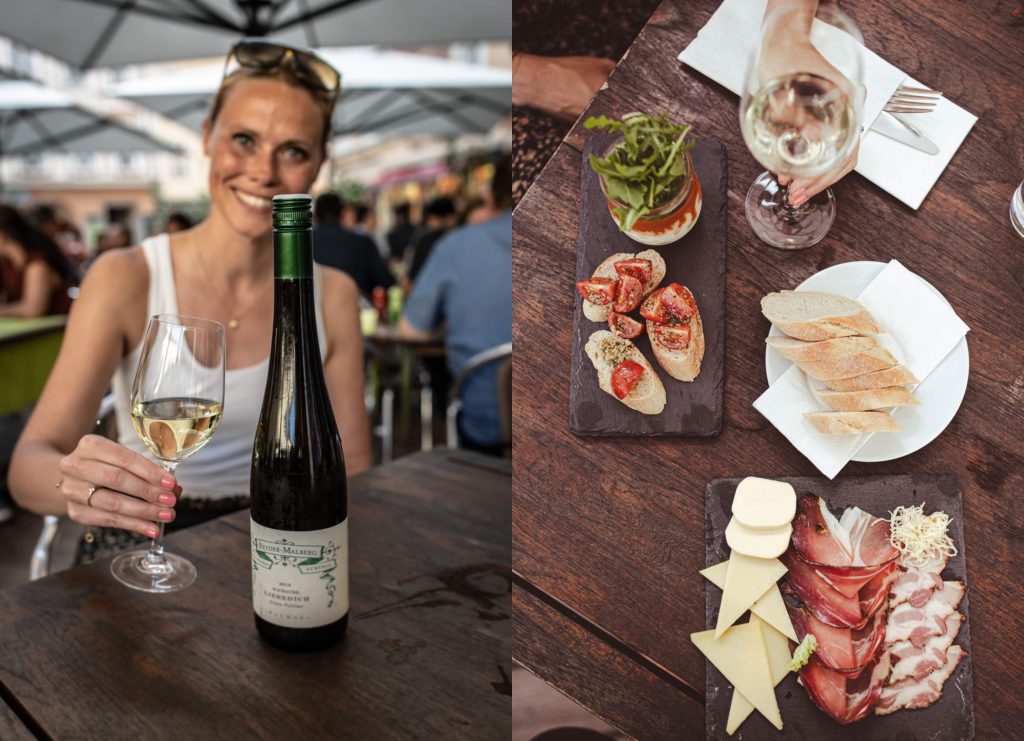
TIP: Our 4 favorite restaurants
Armed with tips from local foodies, we placed our forks in the restaurants mentioned below. All serve traditional Austrian dishes. Some would call it simple peasant food, but for us, it was great to experience tasty alternatives to the more advanced cuisine.
- The authentic: Zum Eulenspiegel was our favorite dining experience, not least because of the charming surroundings. The restaurant is over 300 years old and is located in a tiny house from the 14th century. Although it is a bit touristy, it is a charming experience to sit in one of the small creaking wooden rooms with a fireplace, patinated paintings, and lots of historical artifacts everywhere.
- The classic: Restaurant K + K is located in a building from the 12th century, which gives the modern restaurant an old-fashioned soul. Traditional dishes inspired by international cuisine are served here. They make a hearty Wiener schnitzel served with cranberries and mustard, which freshens up the heavy, traditionel dish.
- The modern: Located in the art museum for modern art, on the top of the mountain with a blistering panoramic view over the city, the trendy restaurant M32 is also physically higher up the gastronomy scale than the other restaurants. The delicate dishes are inspired by Austrian cuisine but are lighter and more artistically arranged.
- For lunch: If you are in the Altstadt and want to have lunch with the locals, then you must visit the historic restaurants Zirkewirt or Zwettlers. Here there is good food, a cozy atmosphere, and the cold beers are accompanied by the neighing of horses and hooves against the cobblestones when the horse-drawn carriages roll by on the small streets.
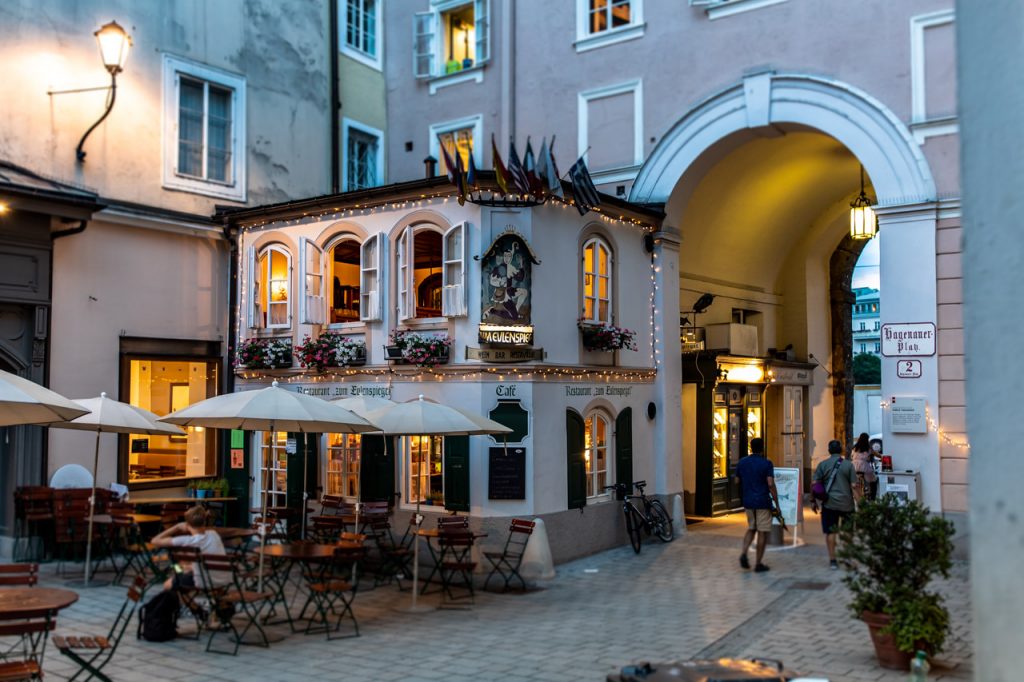
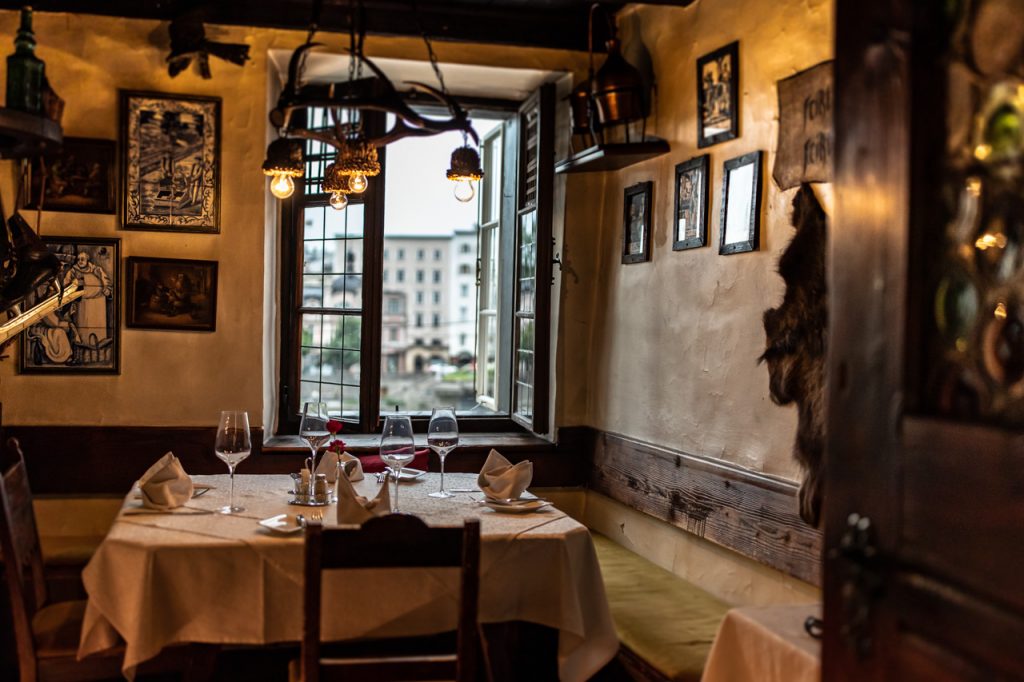
#5 – Taste the history of Salzburg
As two foodies, we are very happy to get to know new destinations through their food culture. That’s why we were quite excited when we went on a guided tour that took us on a tasteful journey through the city’s history.
Our local guide Astrid – who is not least a living encyclopedia, but also wonderful company – showed us around Salzburg, while she told lots of anecdotes about the city’s history, restaurants, shops, buildings, and personalities and filled our goodie bags with tasting samples. What’s not to like? We can also recommended to check Astrid’s other trips on her website Salzburg for you.
TIP: Where to find the local delicacies
Astrid knows the city better than most and gave us a ton of insider tips on where the locals love to buy Austrian treats. Here we have collected a few of her tips:
- Apfel strudel: The classic apple cake is Austria’s answer to France’s croissants. You can’t visit the country without eating apple strudel – and that’s what the locals do at the small Café Habakuk on Linzer Gasse 26. We were especially fond of the alternative version with cheese. In fact, we also have to admit that we prefer their version of the famous Mozart chocolate ball, and not the one at the highly praised bakery shop Fürst. They won gold at the Paris World Exhibition in 1905 and have since had the right to call their hand-rolled chocolate ‘The original Mozart ball’. We recommend you try both so you can find your favourite.
- Coffee: In Salzburg, a ‘to-go’ coffee is a ‘no-go’. Coffee must be enjoyed in a café in peace and quiet – and without Wifi. In Salzburg, the locals have a long and strong tradition of meeting in restaurants and cafés, which are a form of second home. The city’s oldest and most famous café is Café Tomaselli, where the Mozart family also mingled with the upper class in the 18th century. The café is located on the cozy square at Alter Markt 9 and also serves incredible cakes.
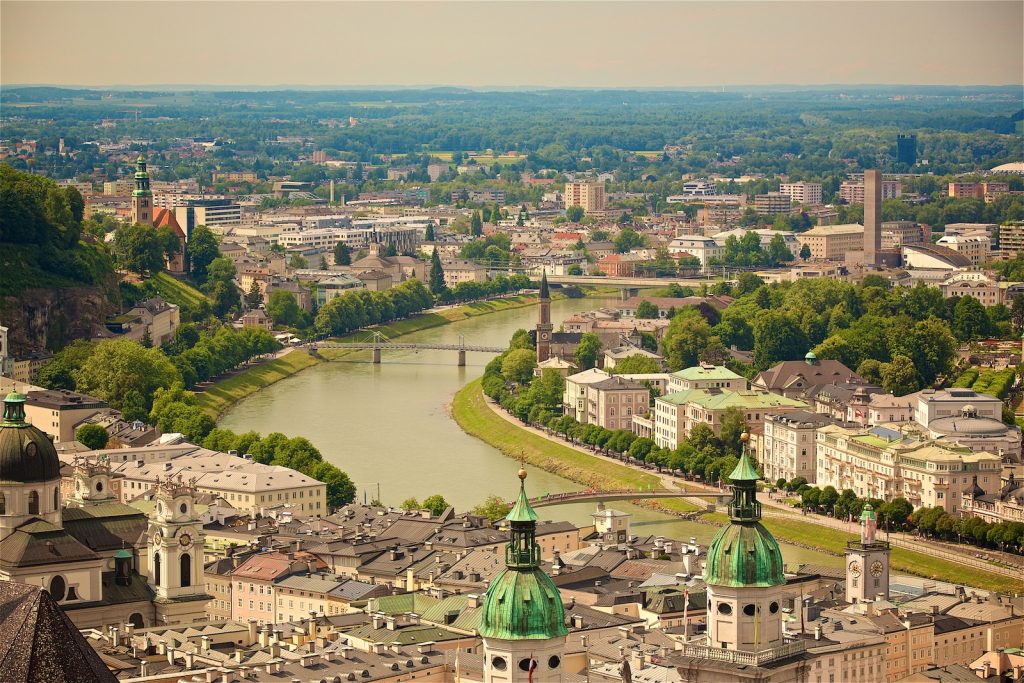
- Wine & Cocktails: If, like us, you fall in love with Austrian wine, you should visit Wein & Co, located right at the start of Linzer Gasse on the square Platzl. On the other side of the square you will also find one of the locals’ favourite cocktail bars, Darwin’s, who make brilliant gin drinks.
- Treats from the monastery: You will find one of Salzburg’s hidden treasures at St. Peter’s Monastery. The monastery is famous for having Austria’s oldest cemetery, which is also an attraction for those who want to experience the locations from the musical “The Sound of Music”. But it is the shop Klosterladen that offers a very special experience. Here you will find a heavenly selection of wines, schnapps, and liqueurs, all produced in Austrian monasteries.
- The best bretzel in town: If you’re in Austria, it’s almost blasphemy if you don’t enjoy a cold beer with a loaf of salty bread. A so-called Bretzel (often known as Pretzel in English). You get the best one at the small square Kapitelplatz. Look for the sign that says the lady sells … the best bretzel in town. Pretty simple.
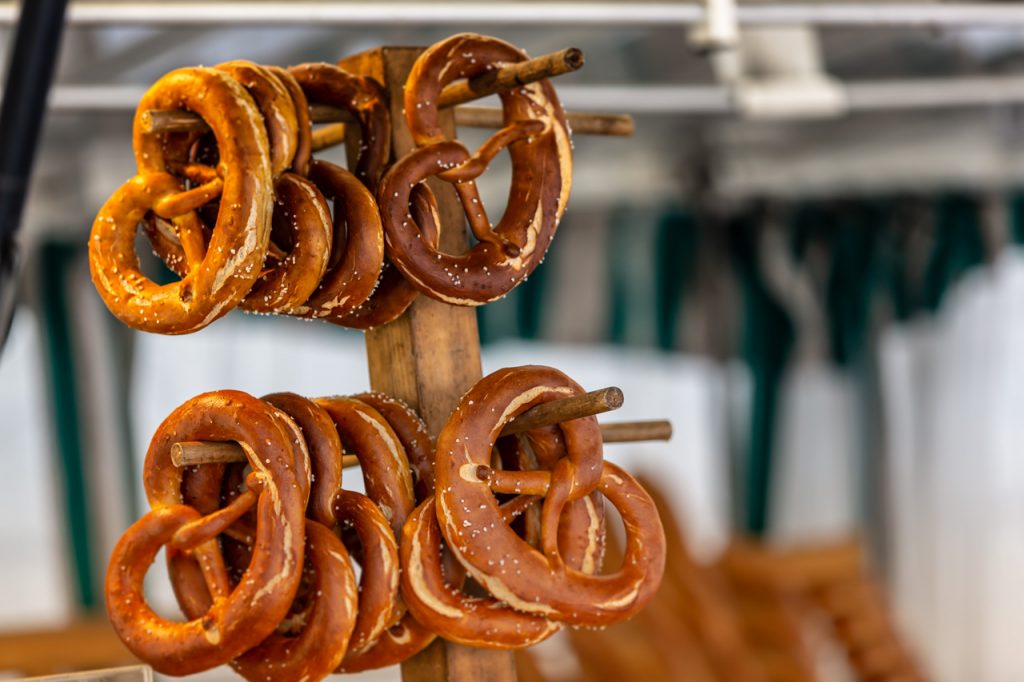
#6 – National romance
One of the things that we found really charming about Salzburg – and Austria in general – is the people’s pride in their folk traditions. Therefore, the national costume is not only highlighted on special occasions. The men’s lederhosen and the women’s drindl are also worn every day, which gives the cityscape a very special and nationally romantic atmosphere.
TIP: Shop Austrian fashion
If your heart starts beating for Austria, you can buy your own lederhosen or an adorable drindl to take home. In several places in the city you will find shops, but also tailors, where you can buy your very own suit. The Heimatwerk shop is one of the most popular and also sells a selection of Austrian handicrafts. It is a fun experience to explore the wardrobe of the locals.
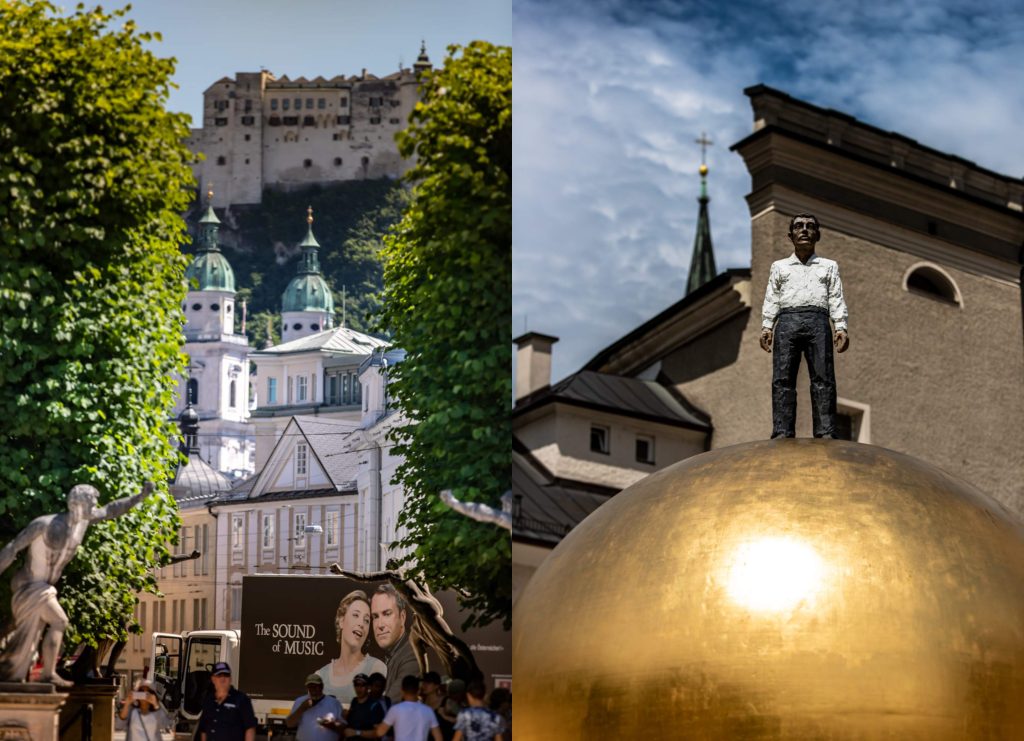
#7 – The city of music
Do you know what Mozart, the musical “The Sound of Music”, and the Christmas carol “Happy Christmas, lovely Christmas” have in common? They all originate from Salzburg. All in all, Salzburg has been an artistic hub in Europe and attracted creative souls for hundreds of years. It can both be seen and felt in the city, which continues to be an inspiring cornucopia of cultural attractions. If you look at a map of Salzburg, you quickly find out who the city’s biggest star is. Everything is called something with Amadeus, Wolfgang, or Mozart.
TIP: Walk in Mozart’s footsteps
In Salzburg, you can experience museums, concerts, dinners with music, and guided tours that relate to Mozart’s life all year round. Armed with a “Salzburg card”, which gives free access to various attractions, we chose to put together a tour ourselves that followed in Mozart’s footsteps. The tour is also a good way to see the city.
Start with a visit to his childhood home, located on the main pedestrian street Getreidegasse (get there early before the tourist hordes arrive). Then take a coffee break at the nearby Café Tomaselli, where Mozart liked to drink hot chocolate (coffee tasted terrible back then). In addition to Tomaselli being famous for their cakes, the café is also Austria’s oldest, with a history dating back to 1705.
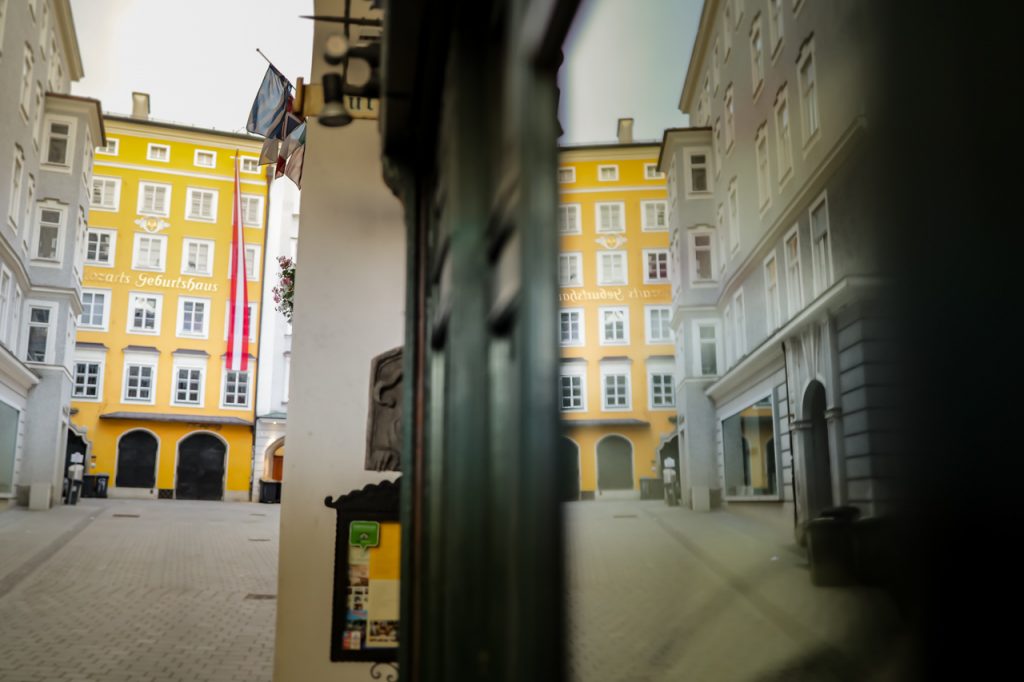
Continue to the magnificent Residenz mansion, where Mozart gave his first concert at the age of just 6. Then head over to the grandiose cathedral, Salzburg Dom, located next to the mansion. Here, Mozart’s parents were married in 1747, and Mozart was baptized in 1756. From the outside, the cathedral may not look like much, but it is an impressive sight that awaits you when you humbly walk through the massive doors. It is one of the most beautiful cathedrals we have seen.
Then let yourself be seduced by the city’s beautiful streets and cross the Markartsteg bridge, which is also strewn with padlocks, as a symbol of the eternal love of lovers – just like Mozart’s love for his wife Constanze. A little further down the street you will find the second home of the Mozart family, located on Markatplatz – close to the postcard-beautiful Mirabell Castle, where the composer played classical concerts for the upper class. From the beautiful flower park, you also have a fantastic view up to the fortress. In particular, the steps in front of the Pegasus Fountain are a hotspot for photo-loving tourists (yep, that’s us!)
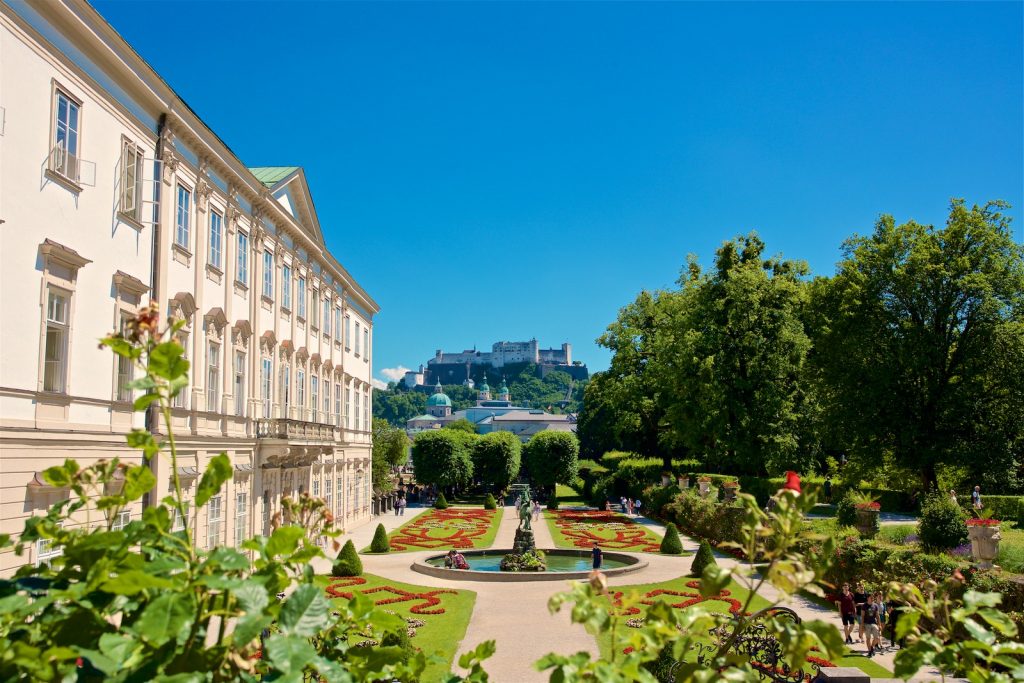
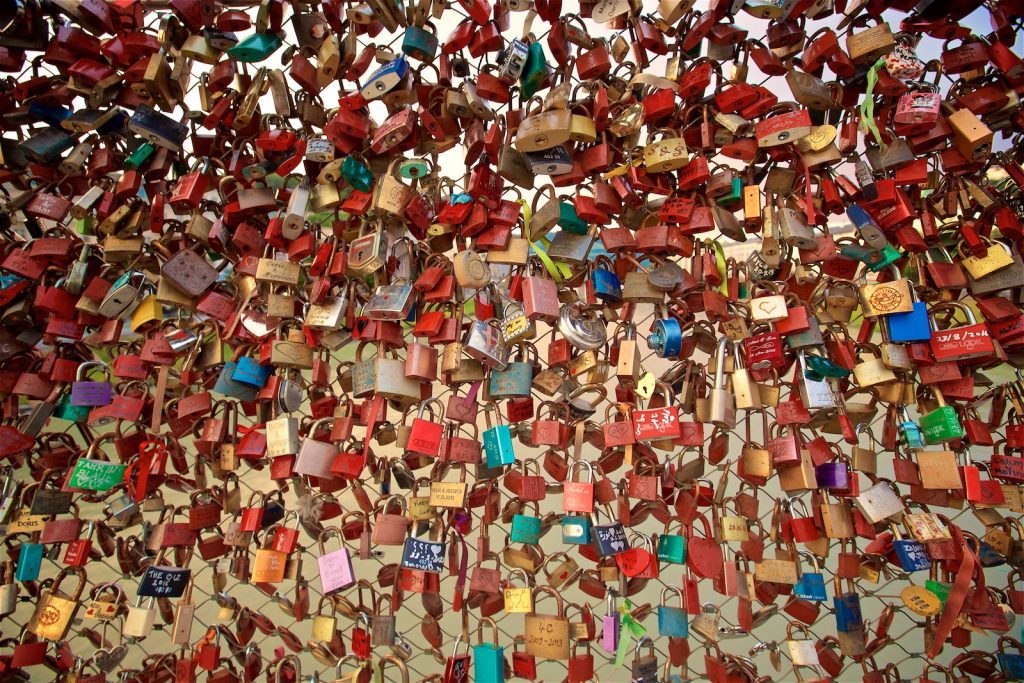
On your way back to the old town, you can swing past St. Sebastian’s cemetery, which has an entrance from the newer pedestrian street Linzer Gasse. Mozart’s family and wife Constanze are buried here. End the day at the authentic and cozy restaurant Zum Eulenspiegel. The restaurant is located in an almost 700-year-old building on Hagenauer Platz, the square in front of Mozart’s birthplace, which thus also existed when the composer lived here.
If you can’t get enough of Mozart’s history, you can follow his wife Constanze’s footsteps back to Copenhagen. After Mozart’s death, she married a Dane and lived for a number of years at Lavendelstræde 1, close to Rådhuspladsen. Moreover, you should see the film “Amadeus”, which is a fictional, but great story about Mozart’s life.

